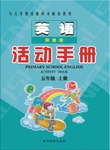题目内容
【题目】A
In a new picture book, a 66-year-old Beijinger recaptures the capital’s Lunar New Year traditions for children.
In the Chinese lunar calendar, the 23rd day of the 12th lunar month, which falls on Feb 11 this year, is the “Little Chinese New Year”. Traditionally, people will set off firecrackers to bid farewell to the Kitchen God who returns to Heaven to report the activities of every household over the past year to the Jade Emperor.
However, such customs have lessened with time in the city and might seem unfamiliar to children nowadays.
In order to preserve traditions for the next generation, Yu Dawu, a 66-year-old painter, recently published a picture book, Spring Festival in Beijing, for children to see how people used to celebrate the Chinese New Year.
Based on an essay by Lao She (1899-1966), one of the most significant writers in modern Chinese literature, the picture book starts from the first holiday, La Ba, the eighth day of the 12th lunar month of the past year, when tradition says people should eat congee made of eight ingredients to bring good fortune in the coming year. It concludes with the Lantern Festival on the 15th day of the first lunar month of the new year, which marks the end of the Spring Festival.
In the book, Yu creates a local family of four who live in an ordinary quadrangle courtyard, and readers follow the family as it celebrates the festival traditions.
“I am an old Beijinger, so when I was drawing and painting for this book, the memories of childhood rushed into my mind,” recalls Yu at a book-sharing party earlier this week.
【1】What’s the name of the new picture book that recaptures the capital’s Lunar New Year traditions for children?
A. Celebrating the Lantern Festival
B. Spring Festival in Beijing
C. the Chinese New Year
D. Little Chinese New Year
【2】What made the painter create such a picture book for children?
A. Reporting the activities of every household over the past year to the Jade Emperor.
B. Following the family as it celebrates the festival traditions.
C. Drawing and painting for the book.
D. Preserving traditions for the next generation.
【3】Which day means the end of the Spring Festival?
A. La Ba. B. the Lantern Festival
C. Little Chinese New Year D. The first lunar day.
【4】What does the underlined word “congee” mean in the fifth paragraph?
A. a gift presented by the author.
B. something given by Kitchen God.
C. a kind of porridge.
D. a red envelope
【答案】
【1】B
【2】D
【3】B
【4】C
【解析】
试题分析:这篇文章介绍了北京的一位画家为了保护中国的春节习俗给孩子们以绘画的形式写了一本介绍北京的春节的书,以此来帮助青少年儿童了解和继承中国的传统文化。
【1】B细节理解题:根据第四段中的Yu Dawu, a 66-year-old painter, recently published a picture book, Spring Festival in Beijing可知该书的名字,故选B。
【2】D细节题:根据第四段In order to preserve traditions for the next generation, Yu Dawu, a 66-year-old painter, recently published a picture book, Spring Festival in Beijing, for children to see how people used to celebrate the Chinese New Year. 可知Yu Dawu 是为了给下一代人保护传统,所以出版了这本图画书,故选D。
【3】B细节题: 根据第五段It concludes with the Lantern Festival on the 15th day of the first lunar month of the new year, which marks the end of the Spring Festival. 可知元宵节标志着春节的结束,故选B。
【4】C 细节题:从文章的第五段中该划线词后面的made of eight ingredients to bring good fortune in the coming year.可知是腊八粥。故选C。

 互动课堂系列答案
互动课堂系列答案